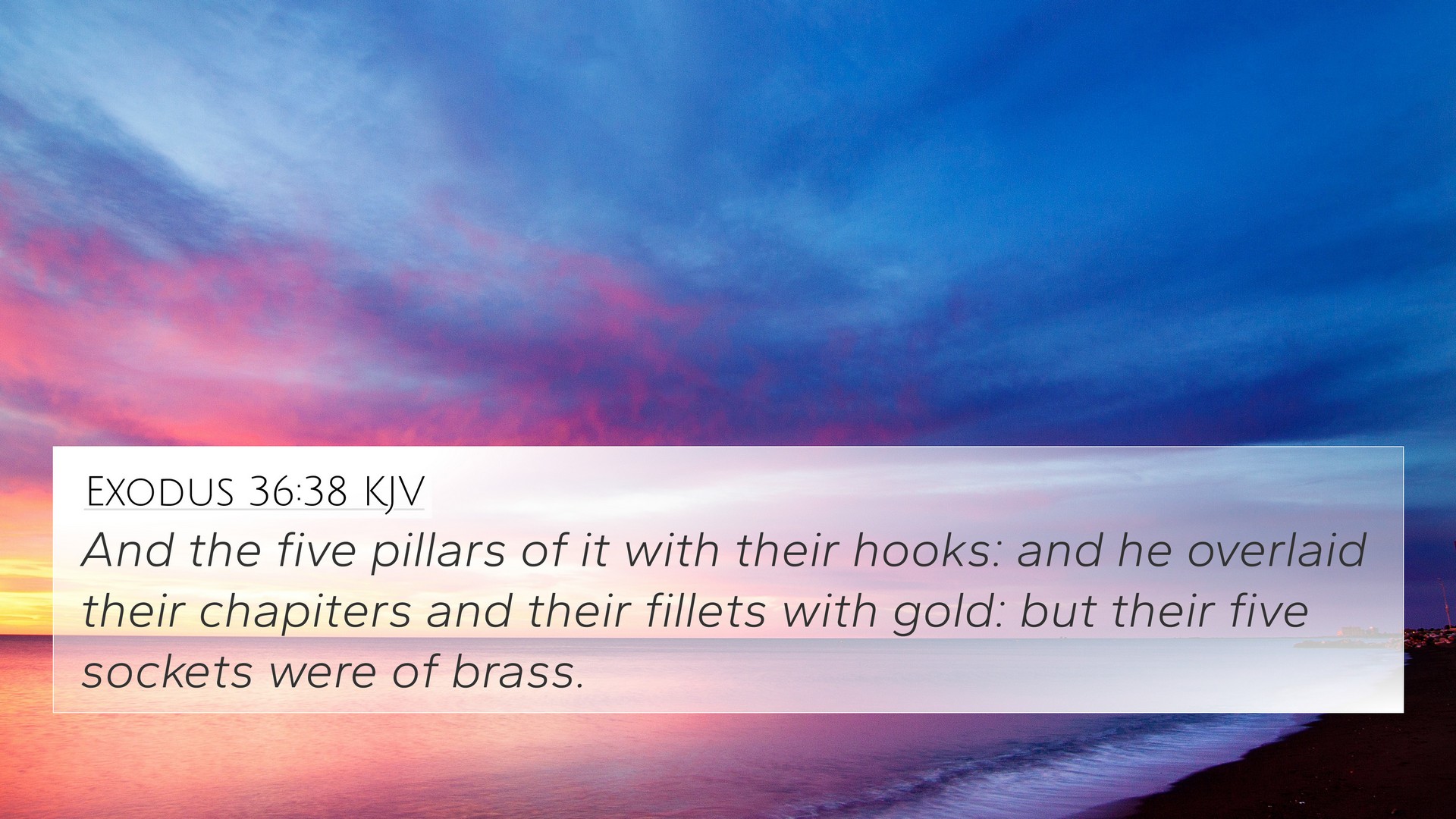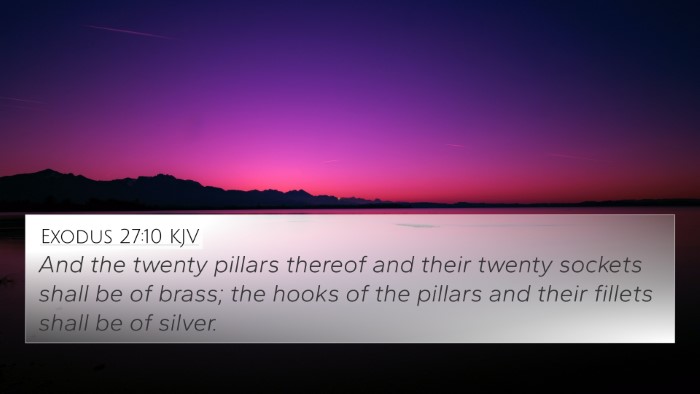Exodus 36:38 - Biblical Interpretation and Commentary
Bible Verse: Exodus 36:38
Verse: "And the curtain for the entrance of the tent of meeting was of blue and purple and scarlet yarns and fine twined linen, the work of a skilled craftsman."
Summary of Meaning
This verse describes the intricate craftsmanship of the curtains used in the Tabernacle, emphasizing their materials and colors, which have significant symbolic meanings. Public domain commentaries provide insights into these aspects, highlighting both their literal beauty and their deeper theological significance.
Thematic Insights
- Craftsmanship: The mention of a "skilled craftsman" indicates the importance of skill and artistry in creating objects meant for divine service.
- Symbolism of Colors: The colors blue, purple, and scarlet have rich biblical associations, often representing themes like royalty, divinity, and sacrifice.
- Significance of the Tent of Meeting: This was a sacred place where God would dwell among His people, symbolizing His presence and guidance.
Commentary Insights
- Matthew Henry: Henry emphasizes that the beauty of the Tabernacle reflects the glory of God. The artistry involved serves to honor Him, and the use of fine materials indicates the value placed on worship and service.
- Albert Barnes: Barnes notes the significance of the colors, linking them to the priestly garments and the significance of the covenant. He stresses that the materials served to remind the Israelites of their relationship with God.
- Adam Clarke: Clarke provides detailed explanations of the weaving process and the expert craftsmanship. He reflects on how these physical elements contribute to a deeper understanding of spiritual truths.
Cross-References
Exodus 36:38 connects to several significant biblical texts, enhancing our understanding through these thematic and symbolic links:
- Exodus 25:4-7: The commanded materials for the Tabernacle, illustrating the divine design.
- Exodus 26:1: Descriptions of the Tabernacle's curtains further detail its structure and beauty.
- Exodus 29:42-43: The notion of God's presence in the sanctuary reiterates the importance of these items.
- 1 Chronicles 28:11-12: Details about the plans for the temple, showing continuity in sacred architecture.
- Hebrews 9:2: Reference to the earthly Tabernacle and its components' significance in the context of New Testament theology.
- Psalms 104:2: Descriptive language about God's creation, paralleling the beauty of the Tabernacle.
- Matthew 27:51: The tearing of the veil at Christ's crucifixion ties back to the importance of the curtain in the Tabernacle.
- Revelation 21:3: God’s dwelling among people as a fulfillment of the Tabernacle's purpose.
- Jeremiah 33:11: The connection between worship and the presence of God, consistent throughout scripture.
- 1 Peter 2:9: The priesthood of believers parallels the significance of the priestly garments and the Tabernacle.
Understanding Through Cross-References
The concept of cross-referencing Biblical texts allows individuals to identify connections between Bible verses, enhancing our understanding of each scripture's context and meaning. For example:
- How do Exodus 36:38 and Hebrews 9:2 connect? Both scriptures reference the design and purpose of sacred spaces, highlighting God's desire to dwell among His people.
- Similarities between Exodus 36:38 and Matthew 27:51: The curtain’s function in separating God from man is dramatically fulfilled through Christ's sacrifice, indicating a shift in how believers access God.
- Find cross-references for Exodus 36:38: Looking at passages like Exodus 26:1 and Exodus 29:42 deepens the understanding of the significance of the Tabernacle's furnishings.
Tools for Bible Cross-Referencing
To explore these connections further, individuals may utilize various tools for Bible cross-referencing. A Bible concordance can help locate relevant verses, while a Bible cross-reference guide provides additional insights into how different scriptures relate to one another.
Conclusion
Exodus 36:38 stands as a testament to the divine call for excellence in worship and craftsmanship, mirroring the intricate relationship between the sacred and the ordinary in our spiritual lives. Its connections to other scriptures enrich our understanding of God's presence and the importance of holiness in our worship.



